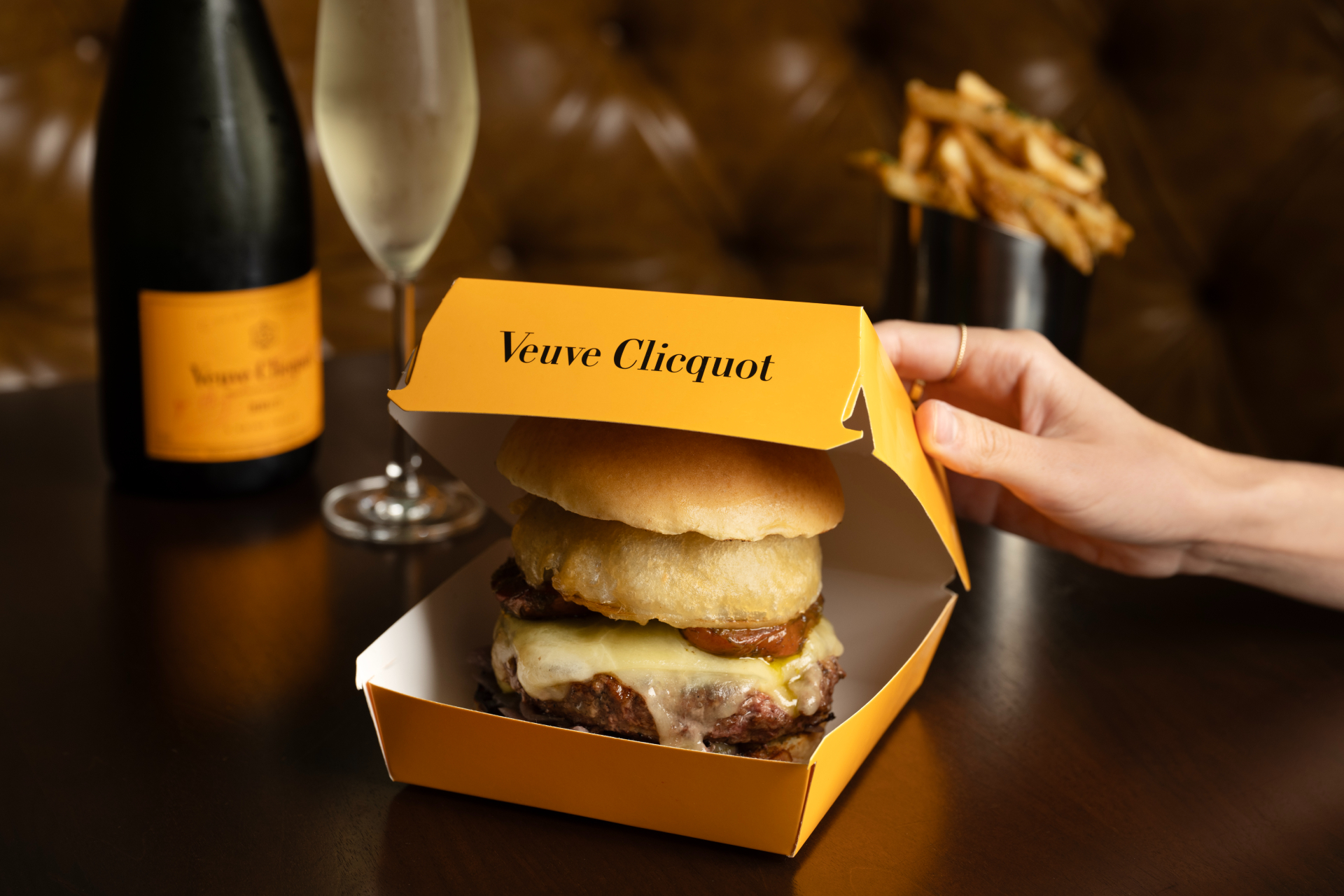
A frosty beer might be the most obvious pairing for grilled burgers, but for a next-level drink pairing, champagne is an excellent choice. To understand the flavors and techniques of this pairing, we spoke to Executive Chef Sebastien Chaoui of The Chester, the patio restaurant of the Gansevoort Hotel in New York. Chef Chaoui has created two burgers at The Chester for this pairing: The Chester Burger and The Ratatouille Burger, all with a glass of Veuve Clicquot Yellow Label.
“Both burgers use different kinds of elevated techniques and ingredients that would help take quality to the next level,” said Chaoui. “Matching the quality of the meat with the quality of VC (Veuve Clicquot).”
Why pair burgers and champagne?

First, why Veuve Clicquot champagne? “They’re an established, heritage brand with high brand standards,” explains Chef Chaoui. “Which aligns with our standards in our cuisine, hospitality, and service. The class, sophistication, and quality of VC match the standards that we strive for at Gansevoort.”
The Chester Burger is the best representation of this pairing. The organic beef patty is thick, and the inclusion of Veuve Clicquot isn’t just with the beverage; it’s also included in the Veuve Clicquot caramelized red onion and the Veuve Clicquot tempura onion (the batter contains Veuve Clicquot champagne). “We use the tempura technique to create an elevated feel,” explains Chef Chaoui. “Paired with the bright and bubbly Veuve Clicquot, the savory burger creates a delicious contrast to create a balanced flavor.”
Sampling the burger and champagne pairing firsthand, we found the subtle sweet flavor of the Veuve Clicquot a great balance for The Chester Burger. Since the beef patty is thick, the brightness of Veuve Clicquot cuts through the richness of the meat. And the addition of two Veuve Clicquot infused onion toppings only adds to the layers of champagne flavor.
Chef tips on creating the perfect pairing

For Chef Chaoui, creating the perfect pairing comes down to preference and an understanding of balancing flavors.
“This is very personal to each chef and what kind of burger you’re trying to achieve, but no matter what, you need fat, flavor, and texture,” explains Chef Chaoui. “It’s very important to have a well-balanced burger that isn’t too dry, too fatty, or no flavor. This comes down to the meat that you choose. Go back to the source. It’s very important to carefully select the meat — from the farmer (carefully caring for the animals) to the producer to the supplier. You don’t have to use extensive techniques if you have the best produce. Grass-fed, organic, and thoughtfully sourced. Temp your meat, rest the meat, allowing it to continue to cook. Serve it on fresh brioche.”



